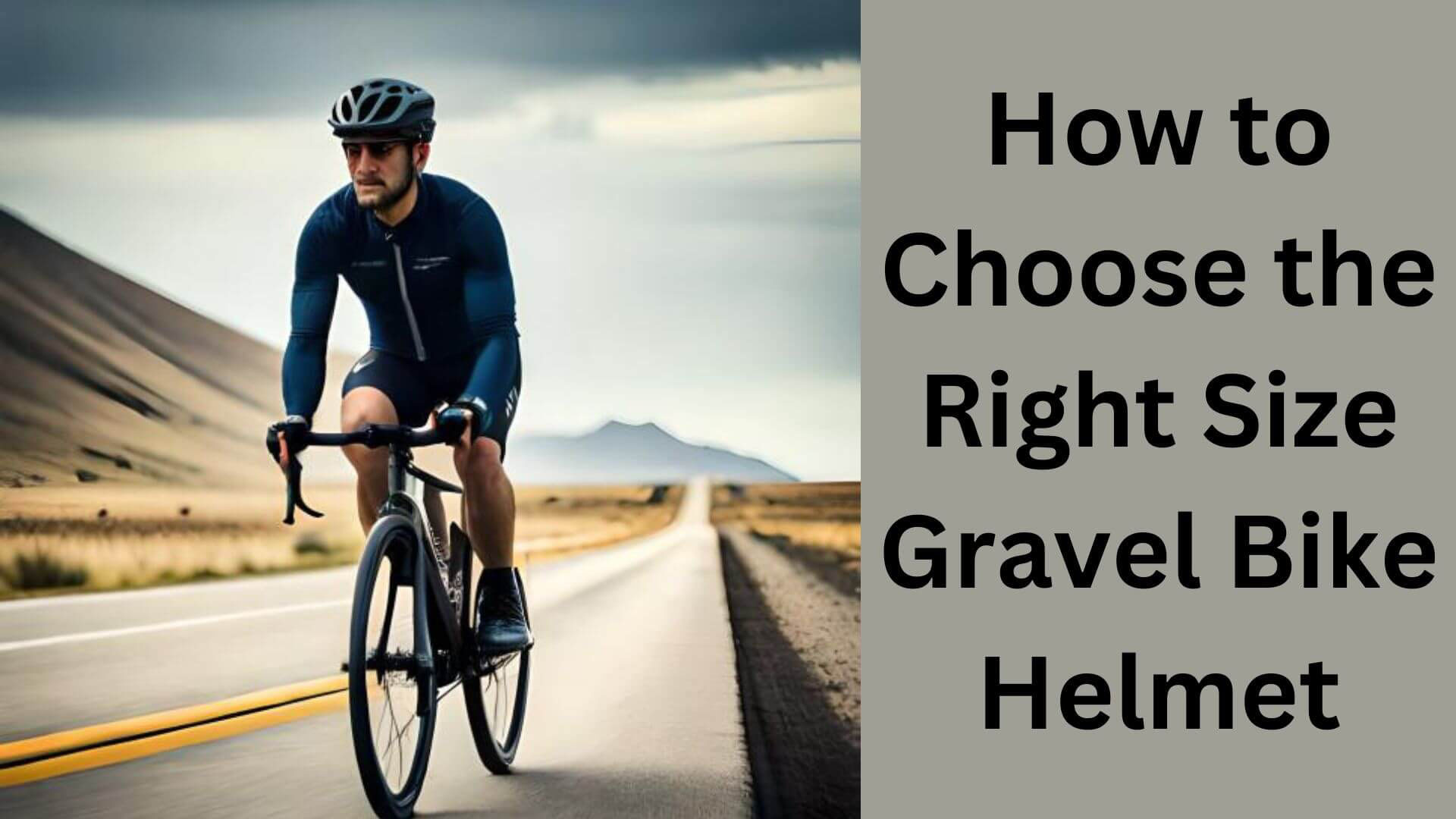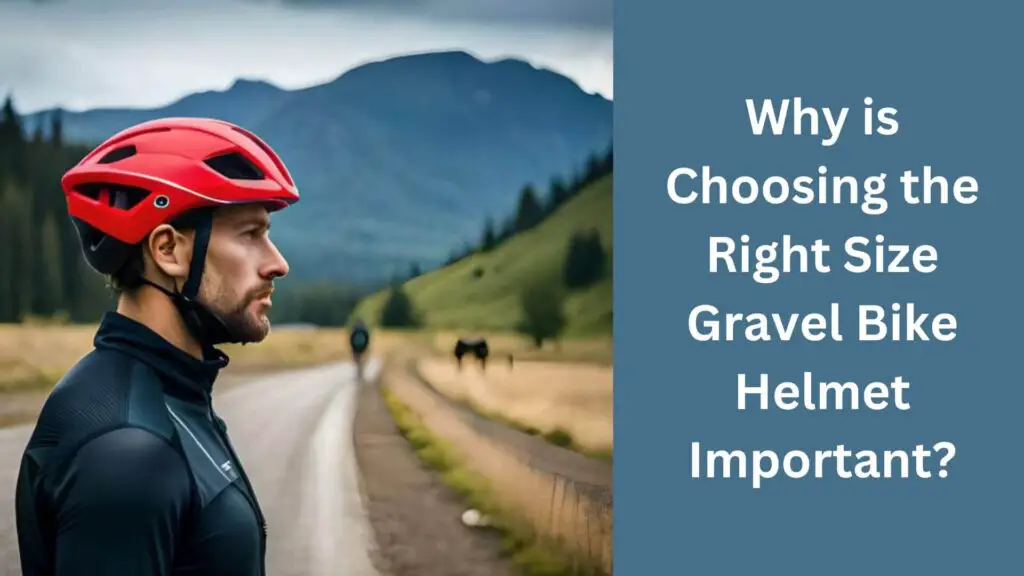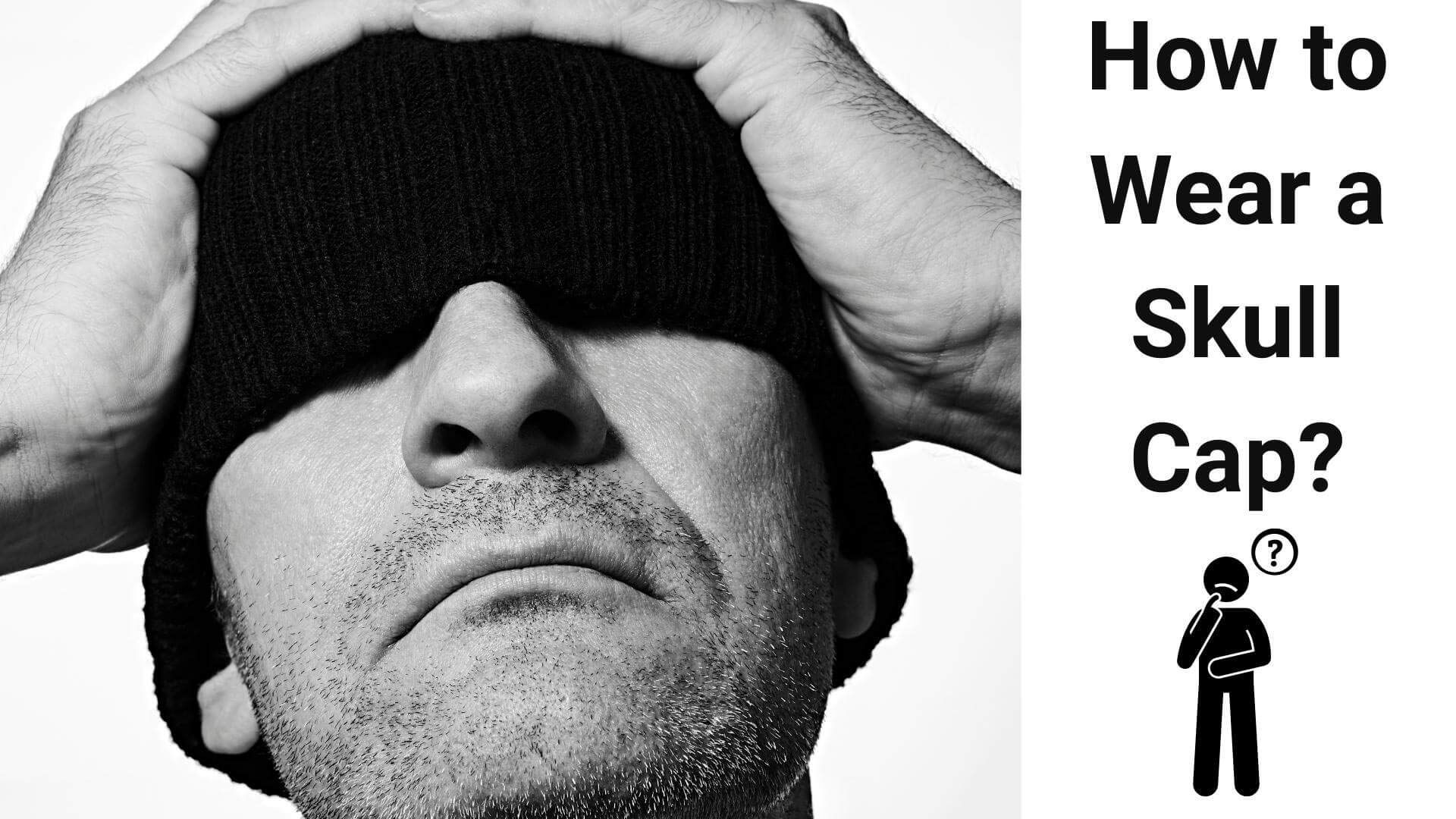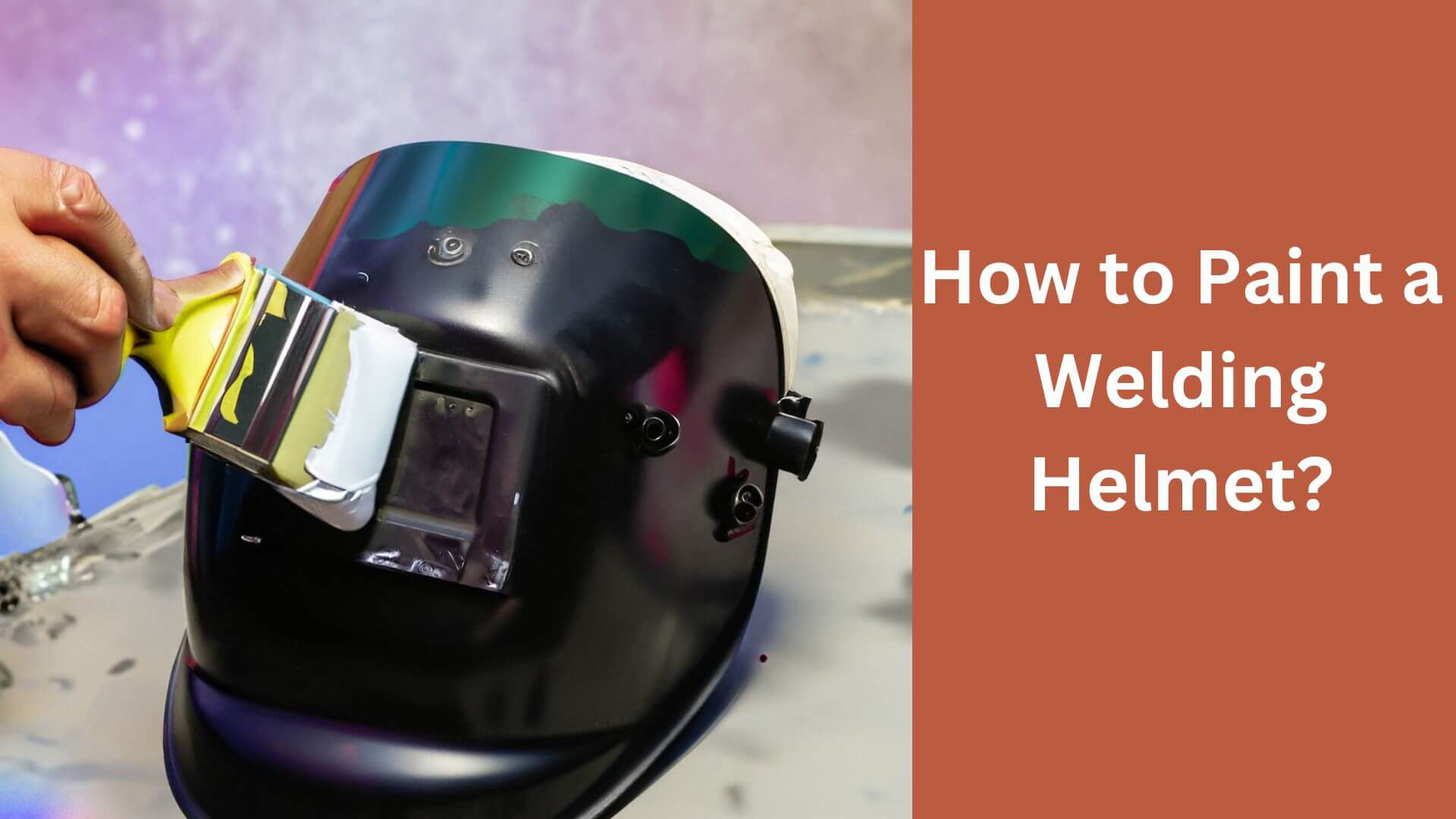How To Choose the Right Size Gravel Bike Helmet?

If you plan to hit the gravel roads, you must have the right gear, including a properly fitting gravel bike helmet. Given the choices, how can you select the appropriate size? Don’t worry; I’ve got you covered.
To choose the perfect fit, measure your head circumference and compare it to the gravel helmet’s size chart. Ensure the helmet sits level on your head, covers your forehead, and doesn’t move when you shake your head.
In this article, I’ll guide you through measuring your head to understand the different helmet sizes; I’ll provide you with all the information you need to make an informed decision in depth.
So, let’s dive in and learn How to Choose the Right Size Gravel Bike Helmet!
Chart: Gravel Bike Helmet Sizes
When choosing a gravel bike helmet, measuring your head circumference and comparing it to the manufacturer’s size chart is essential.
Remember that different brands may have slightly different size charts, so double-check before purchasing. Here’s a general guide to gravel bike helmet sizes based on head circumference:
| Head Circumference (cm) | Helmet Size |
| 51-55 | Small |
| 55-59 | Medium |
| 59-63 | Large |
| 63-67 | X-Large |
Remember, these are just general guidelines, and you should always refer to the manufacturer’s size chart for the most accurate sizing information.
When trying helmets, ensure they fit snugly without any pressure points or discomfort. You should be able to adjust the retention system for a secure fit, and the helmet should sit level on your head, covering your forehead and the back of your head.
By finding the fitting gravel bike helmet, you can ride with confidence and peace of mind knowing you’re protected on the trail.
Why is Choosing the Right Size Gravel Bike Helmet Important?

When it comes to gravel biking, having the right equipment is crucial for a safe and enjoyable ride. One of the most essential equipment is your helmet, which protects your head in case of a fall or collision. Choosing the right size gravel bike helmet is necessary for several reasons:
- Safety: A too-big or small helmet won’t provide adequate protection in case of impact. A too-loose helmet can shift or even come off during a fall, while a too-tight helmet can cause discomfort or headaches.
- Comfort: Gravel biking can be long and challenging, so you want to ensure your helmet fits comfortably for your ride. A too-tight or lose helmet can cause discomfort or pressure points, distracting you from the ride and compromising your performance.
- Visibility: A too-large helmet can obstruct your vision, making it harder to see obstacles and hazards on the trail. A too-small helmet can also affect your visibility, especially if it doesn’t cover your forehead or sit low enough on your head.
- Aerodynamics: A helmet that doesn’t fit properly can create drag and affect your aerodynamics, slowing you down and making it harder to maintain your speed on the trail.
In short, choosing the right size gravel bike helmet is essential for your safety, comfort, visibility, and performance on the trail.
By measuring your head and trying different sizes, you can find a helmet that fits perfectly and gives you the confidence to tackle any challenge on your gravel bike.
How to Choose the Right Size Gravel Bike Helmet? Step-by-Step
Choosing the right gravel bike helmet size can be daunting, especially for first-time buyers. Here are some tips to help you find the perfect fit for your head.
Step 1: Measure Your Head
The first step is to measure your head circumference. You can use a soft tape measure or string. Place the tape measure above your eyebrows and ears, around the widest part of your head. Note the measurement in centimetres or inches.
Step 2: Use Size Charts
Once you have your head circumference measurement, refer to the size chart provided by the helmet manufacturer. Different brands and models may have varying size charts, so check the chart specific to the helmet you are interested in.
Step 3: Try on Different Sizes
It’s always a good idea to try on helmets of different sizes to see which one fits you best. Adjust the straps and chin buckle to get a snug fit when wearing a helmet.
The front edge of the helmet should be positioned just above your eyebrows, and it should sit level on your head. It should also feel comfortable and not wobble when you move your head.
Step 4: Consider Your Hair Length
If you have long hair, consider a giant helmet to accommodate it. Most helmets have adjustable retention systems that customize the fit according to your hair length.
Step 5: Consider the Helmet Type
Gravel bike helmets come in various styles, including road, mountain, and hybrid helmets. Each class has unique features that cater to different types of riding.
Choose a helmet specifically designed for gravel biking, as it provides the necessary protection and ventilation for this terrain.
Step 6: Check for Safety Standards
Ensure your helmet complies with safety standards established by organizations like the Consumer Product Safety Commission (CPSC) or the Snell Memorial Foundation.
Helmets that meet these standards have undergone rigorous testing to ensure they provide adequate protection in case of an impact.
Choosing the Right Brand and Model of Gravel Bike Helmet

Many options exist when choosing the right brand and model of a gravel bike helmet. Each brand and model has unique features, benefits, and potential drawbacks. Here are some of the most popular brands and models of gravel bike helmets, along with their pros and cons:
- Giro Register: The Giro Register is popular for gravel riders due to its lightweight design and comfortable fit. It also features a removable visor and reflective detailing for added visibility. However, some riders have reported that the helmet can feel bulky and may need to fit better on smaller head sizes.
- Bell 4Forty: The Bell 4Forty is another popular option for gravel riders, thanks to its durable construction and ample ventilation.
It also features a removable visor and a comfortable fit system. However, some riders have reported that the helmet can feel heavy and may need to fit better on larger head sizes.
- Smith Network: The Smith Network is a high-end gravel bike helmet with excellent ventilation and a comfortable fit.
It also features a lightweight design and a removable visor. However, the price point may be steep for some riders, and the helmet may need to fit better on smaller head sizes.
- Bontrager Circuit: The Bontrager Circuit is a mid-range gravel bike helmet with good ventilation and a comfortable fit. It also features a removable visor and reflective detailing for added visibility.
However, some riders have reported that the helmet can feel heavy and may need to fit better on larger head sizes.
Ultimately, the right brand and model of gravel bike helmet will depend on your individual needs and preferences.
Common Mistakes to Avoid When Choosing a Gravel Bike Helmet
Choosing the fitting gravel bike helmet is crucial for your safety and comfort on the road. However, riders need to correct some common mistakes when selecting a helmet. Here are some errors to avoid when choosing a gravel bike helmet:
- Not measuring your head: One of the most prominent mistakes riders make is not measuring their head before purchasing a helmet. Measuring your head circumference is essential to select the correct size helmet.
- Choosing the wrong size: Even if you measure your head, it’s still possible to choose the wrong size helmet. Refer to the manufacturer’s sizing chart and try on the helmet to ensure a proper fit.
- Prioritizing style over safety: While it’s essential to choose a helmet that looks good, safety should always be the top priority. Make sure the helmet you select meets the necessary safety standards.
- Not considering ventilation: Gravel riding can be hot and sweaty, so choosing a helmet with adequate ventilation is essential to keep you cool and comfortable.
- Not trying on the helmet: Even if you measure your head and choose the right size, ensuring a proper fit is still essential. Ensure the helmet sits level on your head and is snug but not too tight.
- Choosing a helmet that’s too heavy: A heavy helmet can be uncomfortable and may cause neck strain during long rides. Look for a helmet that’s lightweight but still offers adequate protection.
By avoiding these common mistakes, you can choose a gravel bike helmet that fits well, looks good, and provides the necessary protection for your rides.
Read More: Gravel Bike Helmet vs Road Bike Helmet
FAQs About How to Choose the Right Size Gravel Bike Helmet
What is my head circumference that falls between two sizes?
If your head circumference falls between two sizes, using the smaller size is usually best. Most helmets come with adjustable retention systems that allow you to customize the fit, so a slightly tight helmet can be adjusted to fit comfortably.
Can I wear a road bike helmet for gravel biking?
Road bike helmets are not recommended for gravel biking, as they are designed for smooth surfaces and offer less protection than gravel bike helmets. Choosing a helmet specifically designed for gravel biking is best, as it provides the necessary security and ventilation for this terrain type.
How often should you replace your gravel bike helmet?
You should replace your gravel bike helmet every five years, regardless of whether or not it has been involved in an accident. Over time, the materials in the helmet can deteriorate, compromising its ability to protect your head in case of an impact.
Should I buy a helmet with MIPS technology?
MIPS (Multi-Directional Impact Protection System) is a technology that helps reduce rotational forces on the brain caused by angled impacts. Helmets with MIPS technology are generally more expensive but offer an extra layer of protection. It is up to you to decide whether the additional cost is worth it for your riding level.
Can I use a helmet that has been in an accident?
No, you should never use a helmet that has been involved in an accident. Even if the helmet looks OK, the internal materials may have been compromised, making it less effective at protecting your head.
Can I wear glasses with my gravel bike helmet?
Yes, many gravel bike helmets are designed to accommodate glasses. Look for helmets with adjustable retention systems and vents that won’t interfere with your drinks.
Final Verdict
Choosing the right size gravel bike helmet is crucial for your safety and comfort while enjoying this exciting sport. Remember to measure your head circumference, use size charts, try on different sizes, consider your hair length, and check for safety standards before making a purchase.
Remember to replace your helmet every five years and avoid using helmets involved in accidents. With these tips, you can find the perfect helmet to protect you on your next gravel biking adventure.

Hey, I’m Hrithik Hossain. I am the head of helmethacks.com, which specializes in safety helmets. I am looking to connect with anyone interested in purchasing a helmet or who has any questions about different types of helmets. I have over 8 years of experience as a helmet expert, and I can’t wait to help you find the perfect helmet for you. I can help you with any questions regarding helmets, from the best brands to fitting, style, and more! I really enjoy keeping people safe by ensuring they have the best protection possible.







